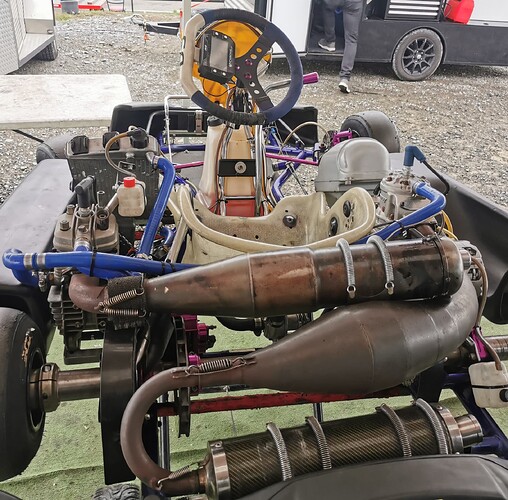I think the torque difference would be negligible, like cars can have 100hp electric motors on the front and 500hp in the rear, but they don’t need to produce the same amount of power. Also like tandem bicycles, one person can provide a lot more power than the other and it still works
I don’t think it matters on a solid rear axle honestly. If anything you could even had one engine lead on throttle with the other coming in later to have a more progressive delivery.
I’m still impressed the gear changes sync.
Just imagine one of the morse cables isn’t adjusted right and only 1 engine changes up.
Incredibly impressive build
Ok maybe I’m being dense but two engines means two sprockets on axle? I can’t see how two chains pulling at two sprockets works unless both engines fire at exact same time. I am missing something.
Two sprockets. Doesn’t matter when they pull really. I can’t think of why it would, the axle gets the power it gets… when it gets it, regardless of how many driven sprockets are on there.
If there’s a power imbalance, it doesn’t matter because the total force is the result of whatever is being applied.
In non clutched situations (ie push start) I’ve seen consideration made for the firing order (big bang vs offset) but it’s a nuance and can only be done if there’s no clutch.
A mate of mine gets this out occasionally. 100cc direct drive ICA motor with a kz on the other side. Seems to work quite well has won a couple of national titles with it in our open class (any motor or combination upto 250cc)
Huh, thanks. I figured that it would complicate things but apparently not. TIL.
